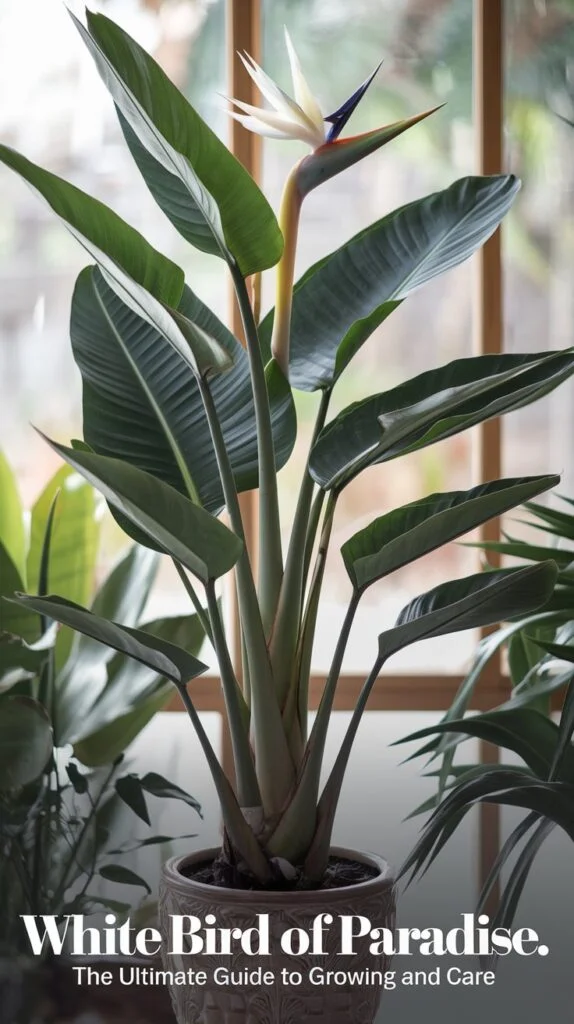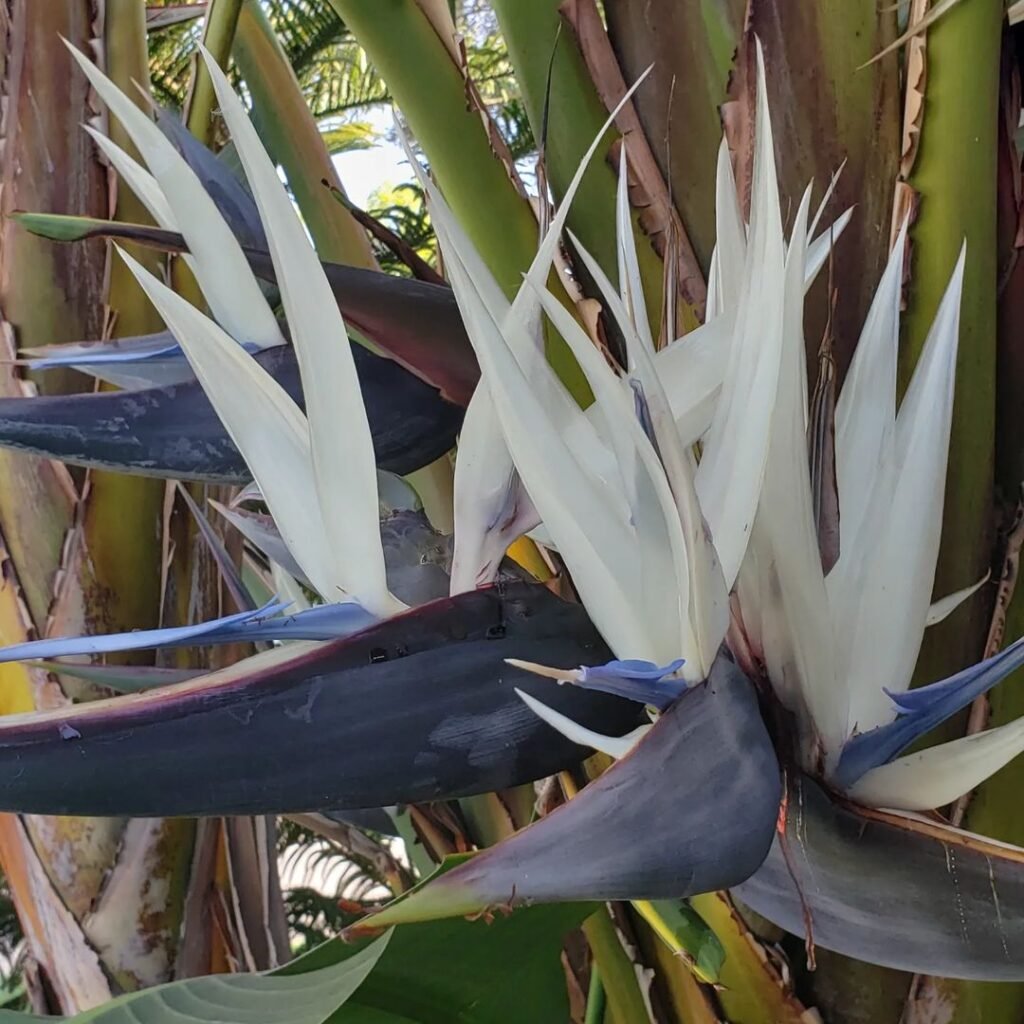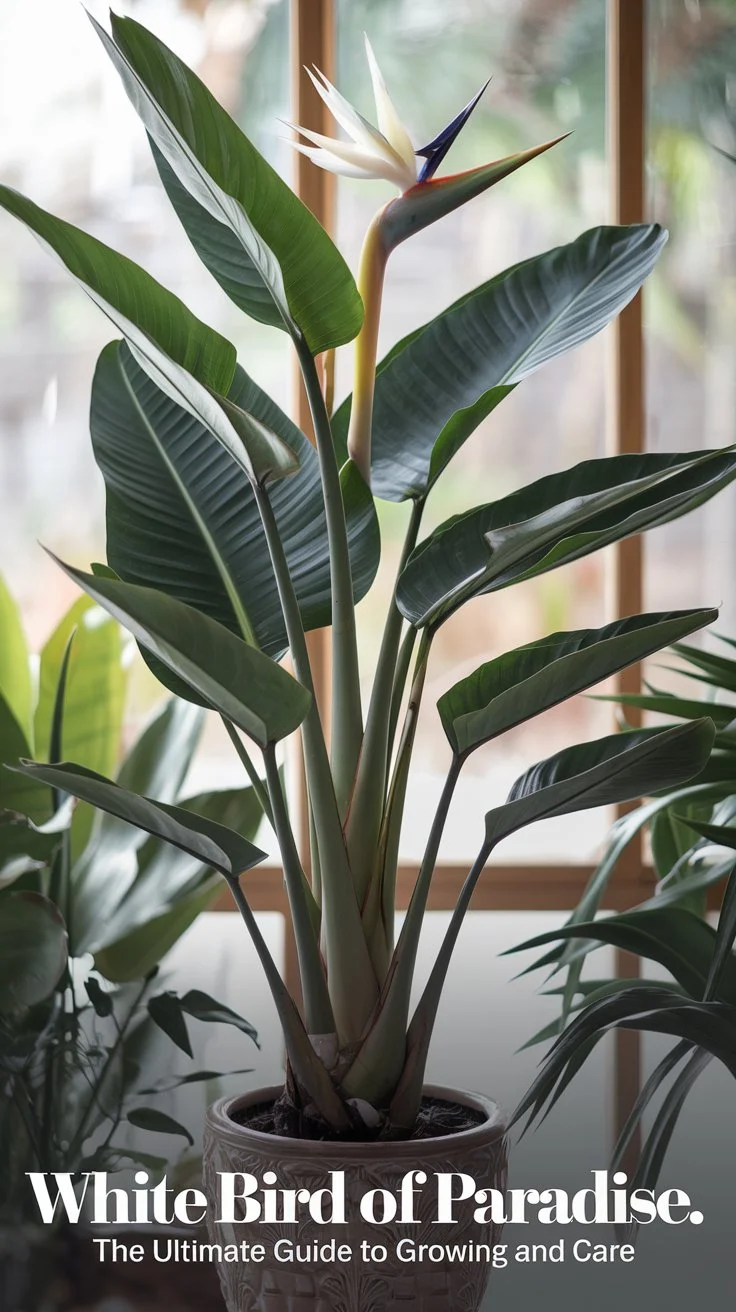Discover how to grow and care for the majestic White Bird of Paradise Plant. Learn about its light requirements, watering needs, and how to troubleshoot common issues for a thriving indoor jungle statement piece.
The White Bird of Paradise Plant (Strelitzia nicolai) is a stunning, large-leafed tropical plant that makes a bold statement in any indoor space. With proper care, this majestic plant can grow up to 20-30 feet tall outdoors and 6-8 feet indoors, featuring broad, banana-like leaves and unique white flowers resembling a bird’s beak and plumage.
As an experienced botanist and indoor plant specialist, I’ve cultivated White Bird of Paradise plants for over a decade. Let me share my expertise to help you successfully grow and care for this impressive tropical beauty.
Quick Facts About White Bird of Paradise

- Scientific Name: Strelitzia nicolai
- Common Names: Giant Bird of Paradise, White Bird of Paradise, Wild Banana
- Plant Type: Evergreen perennial
- Native Region: South Africa
- Indoor Height: 6-8 feet
- Outdoor Height: 20-30 feet
- USDA Hardiness Zones: 10-12
Why Choose a White Bird of Paradise?
- Creates a dramatic, tropical focal point in any room
- Improves indoor air quality
- Low-maintenance once established
- Long-lived plant that can thrive for decades with proper care
- Unique, bird-like flowers (though rare indoors)
How to Care for Your White Bird of Paradise

Light Requirements
- Ideal: Bright, indirect light
- Can tolerate: Some direct morning sun
- Avoid: Harsh afternoon sun, which can scorch leaves
Pro tip: Rotate your plant regularly to ensure even growth, as it tends to lean towards light sources.
Watering Needs
- Keep soil consistently moist but not waterlogged
- Allow top 2-3 inches of soil to dry between waterings
- Reduce watering in winter when growth slows
Warning: Overwatering can lead to root rot, a common issue with these plants.
Soil and Fertilizer
- Use well-draining, rich potting mix
- Fertilize monthly during growing season (spring and summer) with a balanced, water-soluble fertilizer
- Reduce or stop fertilizing in fall and winter
Temperature and Humidity
- Prefers temperatures between 65-80°F (18-27°C)
- Can tolerate brief periods down to 24°F (-4°C)
- Thrives in high humidity (50-70%)
Tip: Increase humidity by misting leaves, using a pebble tray, or placing a humidifier nearby.
Pruning and Maintenance
- Remove dead or yellowing leaves at the base
- Wipe leaves regularly to remove dust and maintain their glossy appearance
- Repot every 18-24 months or when roots begin to crowd the pot
Common Problems and Solutions
Yellow Leaves
- Cause: Often due to overwatering or poor drainage
- Solution: Adjust watering schedule and ensure proper drainage
Brown Leaf Tips
- Cause: Low humidity or mineral buildup from tap water
- Solution: Increase humidity and use filtered water if possible
Pest Infestations
- Common pests: Spider mites, mealybugs, scale insects
- Treatment: Wipe leaves with neem oil solution or insecticidal soap
Propagation Methods
- Division: Separate offsets (pups) from the parent plant during repotting
- Seeds: Rarely successful indoors due to specific pollination requirements
Decorating with White Bird of Paradise
- Use as a statement piece in living rooms or entryways
- Pair with other tropical plants for a lush, jungle-like atmosphere
- Place in large, decorative pots to complement your interior design
Fun Facts
- The White Bird of Paradise is closely related to the smaller, more colorful Strelitzia reginae.
- In its native habitat, the flowers are pollinated by sunbirds, which perch on the spathe to feed on nectar.
- The leaves are naturally split, an adaptation that allows wind to pass through without damaging the plant.
Remember, while the White Bird of Paradise can be a showstopping addition to your indoor jungle, it requires patience and consistent care. With the right conditions and attention, you’ll be rewarded with a magnificent, long-lived plant that brings a touch of the tropics to your home.
For more gardening tips and plant care guides, visit usagardenhub.com





4 Comments on “White Bird of Paradise Plant : The Ultimate Care Guide”